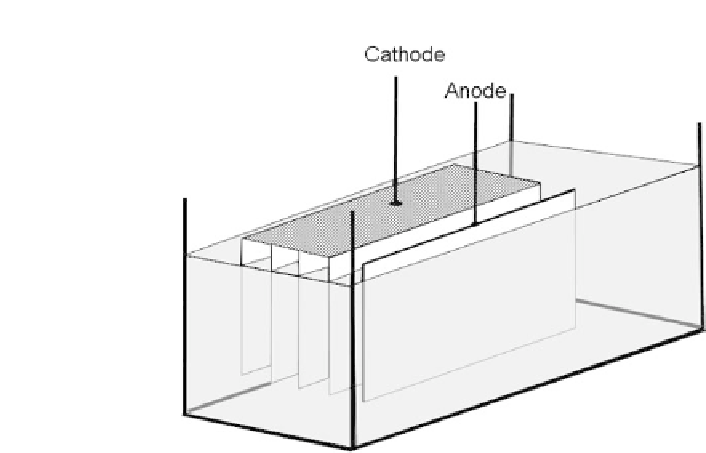Environmental Engineering Reference
In-Depth Information
Figure 3.2
Electrodeposition is suitable for the processing of batches of
large-area devices through multi-plate cathodic deposition. See also Colour
Insert.
be prepared using this technique. The production of 0.9 m
2
solar panels by BP Solar using electrodeposited CdTe achieving
e
ciencies greater than 10% has proved the manufacturability of
this technology. Recent accelerated work on electrodeposited solar
energy materials and devices in many parts of the world [11-13]
shows the recognition ofthe strengths ofthis simple technique.
3.3.2
Self-Purification and Built-in Hydrogen Passivation
In the development of electronic materials and devices, impurity
control is a critical issue. The first step is to minimise the impurity
sources present in and around the electrolyte. The solvent used in
the electrolyte should be a high-purity medium, and in the case of
aqueous solutions, double-distilled water or de-ionised water fulfils
therequirement.Inmanysituations,theelectrolytesareacidic,with
pH values in the range 2-4, and under these conditions, silicon and
sodium ions leach into the electrolyte from glass vessels used for
the electrolytic bath [14]. This can be easily eliminated by using
Teflonware instead ofglassware inthe electrolytic bath.








